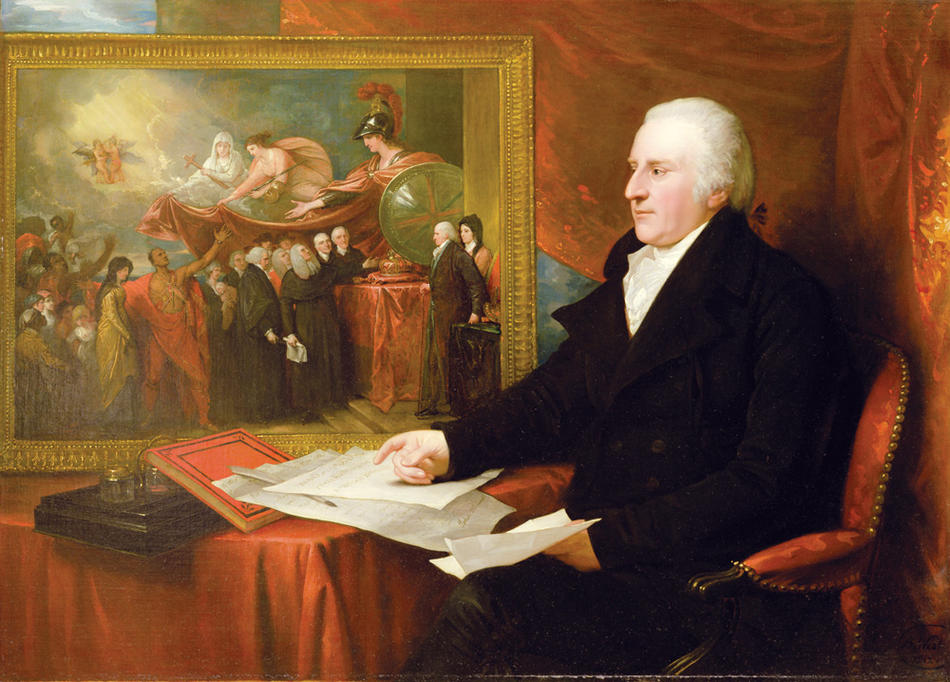In the summer of 1783, less than two years after the defeat of the British army at Yorktown, more than 3000 former slaves left New York City to make a new home in Nova Scotia. In the cold Maritimes, they hoped to secure land, autonomy, and the rights of loyal British subjects, as they were promised by the British commanders who had asked for their assistance during the war. The white Loyalists with whom they traveled, however, had other ideas and conspired to deny their fellow exiles in Nova Scotia the independence that the British government had pledged. And so, led by the charismatic former slave Thomas Peters, and with the financial assistance of the British abolitionists in London, 1196 black men and women left Canada for Sierra Leone. Far from the slave societies of the Americas and their crushing racial hierarchies, they found a chance for self-determination. At the same time, their sponsors and protectors in England attempted an experiment in antislavery colonization, hoping that a profitable settlement peopled by free blacks would provide an example for an alternative to slavery in the Americas and a means of reorganizing British enterprise in Africa.
This is the story Simon Schama has to tell in his gripping new book, Rough Crossings: Britain, the Slaves, and the American Revolution, and it might seem a departure for the University Professor of history and art history. His numerous and highly acclaimed books range from the history of Dutch art and culture to a multivolume epic on the history of the British Isles. Until now, however, Schama has shown only a passing interest in American history, and even less in the history of slavery. And, upon close reflection, Rough Crossings stands as a history of Britain and the British Empire as much as a history of African Americans or of the course and consequences of the American Revolution. Indeed, the book might be best read as a kind of reply, perhaps even a rebuke, to the latest run of popular biographies on the Founding Fathers. As with those works, rather than unearth a new story, Schama renders more accessible its other side. In this case, he presents the history of the American Revolution, and the history of African Americans in the American Revolution, through the lens of British history and from the perspective of its British participants. This he does with his characteristic wit, verve, and extraordinary historical imagination.
Rough Crossings opens and closes with a discussion of a black Loyalist who, after escaping slavery, chose to call himself British Freedom. This framing emphasizes that for many enslaved men and women in revolutionary America, “it was the royal, rather than republican, road, that seemed to offer a surer chance of liberty.” Much of the book traces the aspirations, choices, struggles, and triumphs of men and women like British Freedom as they made their way from America to Canada and then to Africa. But Rough Crossings is more about British freedom, as a value and an ideal, and not only in the way enslaved men and women understood the term.
The British-born Schama makes no attempt to disguise his pride in the history of the British antislavery movement, which at once gave credibility to the British army’s offer of liberty to black Americans during the Revolutionary War and then arranged for their resettlement in Africa during its aftermath. The two halves of the book, titled “Greeny” and “John,” take their names from two English antislavery advocates, Granville Sharp and John Clarkson. That emphasis indicates a lightly disguised aim of the book. In a September 2005 interview in The Scotsman, Schama confessed that he decided to write Rough Crossings shortly after New York City unveiled its plan to build a freedom tower at Ground Zero, a tower that would reach the symbolic height of 1776 feet. He could not abide by the suggestion, he explained, that liberty began in 1776.
Rough Crossings serves as an apology neither for King and Parliament nor for British slavery, to be sure. Schama dwells upon British cynicism during the American Revolution and the limits of British philanthropy. The British army liberated slaves to win a war, not to promote emancipation, and in Sierra Leone they would prove impatient with and then hostile to black self-government under the Union Jack. Still, even with these caveats, Rough Crossings does not quite free itself from the peculiarly British impulse to consider the history of slavery as the history of its abolition. The uninformed reader will learn nothing at all about the extent or the significance of slaveholding in the British Caribbean or British preeminence in the Atlantic slave trade during the 18th century. These silences are revealing. In this account, slavery belongs to American history. Antislavery, in turn, belongs primarily to British history.
From whatever perspective one may view the American Revolution, Rough Crossings seems to suggest, in the matter of slavery, at least, the British had justice and humanity on their side. If the British were bad, the Americans were much worse. In this way, the politics of slavery in the late 18th century finds new life in the writing of history in the early 21st century. Samuel Johnson, the arch critic of both the American Revolution and American slavery, would have approved.
Regrettably, Schama never quite explains what the British were up to when they lent assistance, however halfhearted and incomplete, to black aspirations for liberty during the era of the American Revolution. What motivated the abolitionists in Britain? The British antislavery movement operates as a deus ex machina in this account — important enough to drive the plot, but not to attract critical scrutiny of its own. A thoughtful reader perhaps will detect a continuity in purpose from the Somerset case of 1772, which effectively ended slaveholding in England, through the protection of black refugees during the American war, to the colonization of former slaves in Sierra Leone in its aftermath. In every instance, British philanthropists showed as much interest in Britain’s reputation and its commitment to the idea of liberty as to what exactly their actions would mean for liberated black men and women. John Clarkson and Granville Sharp stand out in this account for their sustained interest in what the former slaves wanted for themselves.
What did loyalism mean to the black Loyalists? Was loyalism an identity, an ideology, a strategy, or some combination thereof? In some instances, the professed loyalism of the former slaves seems purely self-serving. The expressions of loyalty aim to win protection and patronage, but little more. Elsewhere, the former slaves exhibit an emotional tie to the British state and a passionate commitment to the idea of British freedom. The latter seems to be the interpretation that Simon Schama prefers, but the case is never made explicitly. As is often so in the history of America or the history of the British Empire, a longer and wider view on these events puts the case in a rather different perspective. From this book, readers would not guess that the British employed hundreds of slaves in the conquest of Havana in 1762, or that the Dutch in 1770 liberated some slaves to capture others who had run away from their Suriname plantations. The history of the Americas in the two centuries before the American Revolution is rife with examples in which European governments offered liberty to slaves in exchange for military service. The odyssey of the black Loyalists in the era of the American Revolution long has functioned as a useful corrective to American exceptionalism. But the long history of black service in the work of European empires in the Americas perhaps should also serve as a correction to Anglo-American exceptionalism.



